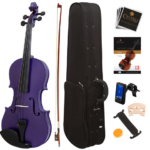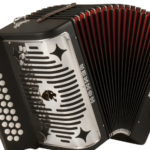If you like listening to different music, you’ve probably run across recordings in mono sound format instead of familiar stereo. Are you curious about mono and stereo sounds? What are the specific differences between mono vs. stereo?
One major difference is the manner of recording. Mono sound records convert a sound to an audio signal using just one channel. On the other hand, stereo sound uses multiple channels to record a sound. This will, in turn, result in a recording with multiple signals. Mono is not necessarily better than stereo, and vice-versa. It will all depend on the context of where you will be using the sounds.
Read on to learn more about the differences between mono vs. stereo sound and how you can use them properly.
Mono vs Stereo Audio

What Is Mono Audio?
Origin of the Word Mono
The term mono is short for monophonic. It came from the Greek words mono (one) and phonē (sound). Mono audio is any sound recorded or played back using just one audio channel.
Single Microphone When Recording
For instance, a single microphone recording the sounds of a strummed guitar is a mono recording. The reason is that you only used one audio recording channel (the microphone). Even if you recorded multiple instruments but used one microphone, the recording will be mono.
It does not matter if you recorded an entire orchestra. If you only have a single microphone for recording, it will result in a mono recording.
Benefits of Mono
The biggest advantage of monoaural sounds is that they are more consistent than stereo. If you attend an outdoor concert, you and the audience will need to hear the same thing. Since there is no difference in volume, blasting the sounds in mono will greatly reduce the chances of phasing issues.
If you like using the Bluetooth earpieces with only one earbud (not the TWS earbuds), you’d need your audio to be on mono. This is so you can hear all the musical elements.
Also, mono sounds are not quite as large as stereo sounds in terms of file size. This is if you use the same file compression on both.
What Is Stereo Audio?
Origin of the Word Stereo
The word stereo is the shortened form of stereophonic. It came from the Greek words stereós (full) and phonē (sound).
Two Microphones to Record
Unlike mono audio, you will need two microphones to record it and play it back through two channels. Almost all consumer audio products are in stereo formats. The sounds in television shows, movies, videogames, and most music are in stereo.
Most consumer electronics also come with at least two channels. This means that they can playback stereo recordings.
Two Kinds of Stereo Sound
There are two kinds of stereo sound:
- True stereo
- Pseudo-stereo
True Stereo
True stereo sound mimics how human ears hear sounds through the right and left ears. The brain interprets the signals from both ears to pinpoint which direction the sound came from. It also identifies how far it is from where you are.
Use Multiple Recording points and Playback Channels
Stereo sound recreates this using multiple recording points and playback channels. This provides the listener with a realistic and three-dimensional sound perspective. When it comes to the overall listening experience, stereo produces a more realistic listening experience compared to mono.
Stereophonic covers more than just two-channel audio. Quadraphonic and surround sound systems are also part of this umbrella term.
Pseudo Stereo
On the other hand, Pseudo stereo is a mono recording played through two channels. It seems like you are listening to a stereo recording, but actually to two mono channels simultaneously.
Benefits of Stereo
When you’re listening to music, stereo sounds let you create an image in your mind. It could be in 3D or multi-dimensional.
Meanwhile, if you’re producing music, you can design it in a way that it can be in a wider stereophonic field. You can pan sounds around, manipulating it in such a way that it moves from one speaker to another. You can do this even within the track itself. All these wonderful things are possible when you use stereo.
History

Two-channel Audio Systems
Clement Ader demonstrated the concept of two-channel audio systems in 1881. Note, though, that up until the 1940s, mono sound recording was still the most popular and widespread. Incidentally, in November 1940, the first mainstream motion picture used stereophonic sounds.
Advent of Magnetic Tapes
The advent of magnetic tapes made the stereophonic sound much more viable than before. The reason is that they made it possible to record different channels on one ribbon.
In the 60s Albums Are in Both Mono and Stereo LPs
In the 60s, recording studios would release albums in mono and stereo LPs. It is because people back then still made use of mono album players. In addition, the radio stations back then were mostly in the AM band.
They were incapable of playing stereo tracks. Most movies back then were also released in both mono and stereo sounds because not all theaters had stereo systems.
Again, mono vs stereo – what is the difference between them? Mono sound utilizes only one channel to convert a signal into a sound. Meanwhile, stereo sound uses several channels in converting multiple signals to sound.
Mono Vs. Stereo – Which One Should You Use?
There is no clear-cut winner between stereo vs. mono audio because your choice will depend on the results you want. You cannot compare mono vs. audio because they work in different contexts.
Stereo Gives Music Depth and Space
For instance, if you want every song’s detail to be prominent, use stereo sound. Do the same if you want the music to provide a sense of depth and space. It will give you the means to let the listener hear every musical/audio element. Stereo will make your music or soundtrack more immersive.
Use Mono When Producing a Podcast
Meanwhile, if you will be producing a podcast or YouTube video, stereo is unnecessary. You don’t also need stereo if you will be streaming games online. This is because you will usually only use one microphone to record vocals in mono. You need to use mono audio because it enables the listeners to hear the vocals without any phase cancellation.
Utilize Mono Recording to Record Different Tracks
You can also use mono recordings to record different tracks that you will then mix later. For instance, if you are an amateur musician, you can record the instrumental tracks separate from the vocals. You should then mix them later using studio software.
Overall, deploy a stereo field if you want to provide a sense of space and depth in your music. However, if you want your listeners to concentrate on the content’s original sound, record the audio in mono.
Mono Vs. Stereo – Which Sounds Better?
Stereo Provides Immersive Experience
Without providing enough context, you cannot explicitly say that stereo is better than mono and vice-versa. You need to put the uses of the sounds in context to get your answers. Stereo is best if you want to provide an immersive experience.
Stereo for When You’re Watching Movies at Home
This is especially true when played through headphones or a surround sound system. For instance, you’d want stereo sound if you watch movies on your big screen tv at home.
Mono Sound for Concerts, Speaking Events, and Other Events
Meanwhile, if you will be attending concerts, speaking events, or any event with plenty of participants, mono sound is preferable. The reason is that it prevents phase cancellation, which is a common problem with stereo sounds.
Stereo and Phase Cancellation
Phase cancellation is when you play one sound signal through one speaker. The other speakers negate its sound in certain places. This means that you won’t be getting the whole sound unless you are almost exactly in between the speakers.
When playing for a large crowd, you’d need all the speakers to transmit mono sounds. This is so that the audience can hear everything.
Mono Only Have a Single Signal
Mono sounds only have a single signal. In other words, streaming it through multiple speakers means that they will all be playing the same thing. It will eliminate the problems with phase cancellation.
Mono sounds are also somewhat louder because there are no mid and side signals. This means all sound elements are combined to make a single audio signal. This makes mono sounds seem louder when compared to stereo sounds set at the same volume.
Mono Vs. Stereo Headsets

What about when you are using headsets? You need headsets at home and don’t want to bother the neighbors with your blaring music. Your headset should then be your primary listening option. When you output your sounds through headsets or earbuds, the difference between stereo and mono sounds becomes more apparent.
When listening to mono sounds using headphones or headsets, you will notice that both earpieces are playing the same sound. This is the signal of the mono sound playing through both earpieces. There are no mid or side ranges. All sounds flow out as a single coordinated signal.
If you play stereo sounds through your headphones, you get the same effects as if you’re listening through speakers. You will hear a somewhat single, wide, and immersive sound. However, each ear hears different things.
Mono Vs. Stereo Recording
Mono Recording
One Microphone to Record Mono Audio
When recording audio for mono and stereo playback, you will need to follow different patterns. To record mono audio, you will not need a lot of equipment. The only thing that you need is one microphone. Once you set up one microphone, you can record your mono sound.
Less Stressful Than Stereo Recording
You can then enjoy a single-signal audio track that you can playback on any output device without losing details. Recording in mono is a lot less stressful and demanding than recording in stereo.
Stereo Sound Recording
Get At Least Two Microphones
With that said, stereo sound recording requires at least two microphones set up in different positions. Aside from at least two different microphones, they also have to be high quality. That way, they can pick up the slightest nuance in sounds. You also need to pan one microphone to the subject’s right and the other to the left.
Audio Track with Two Signals and Plenty of Details
After finishing your recording, you will be getting an audio track with two signals that have plenty of details. However, you will need to playback the audio using a stereo speaker setup for hearing these details. It will not work with a single speaker. You won’t hear every detail that the two microphones captured. You will only get to hear just one signal.
Conclusion – Mono Vs. Stereo
Mono sounds are those that only use one channel during playback. This means you will hear every sound using just one speaker. On the other hand, Stereo sounds consist of sounds recorded on multiple channels. This sound gives you a sense of space and immersion. However, this will only be possible if you have a multi-speaker stereo setup.
In terms of mono vs stereo and which one is better, it will all depend on the context of where you’ll use them. For instance, movie and videogame soundtracks must be in stereo. This is to make you feel immersed in what you are watching.
Mono is better for concerts and speaking engagements with many people in attendance. These people need to hear everything that is happening on the center stage.









